Orthopedic dentistry
Loss of individual teeth, problems with chewing function can be acquired due to age-related changes or be a consequence of trauma. Orthopedic dentistry helps to restore the aesthetics of the smile and restore the ability to chew and speak normally. This direction of dentistry solves the problems of patients with the help of specialized designs and devices. The orthopedic dentist at the Dobrobut MC clinic uses modern diagnostic tools, implants, prostheses, replacement, and regulating devices.
What does orthopedic dentistry do
- identification, prevention, and treatment of defects of the speech apparatus;
- treatment of jaw diseases using special designs and devices;
- restoration of the integrity of the arch of the dentition;
- installation of prostheses, adjustment or replacement devices;
- elimination of violations of the function of chewing.
The work of an orthopedic dentist is direct dental prosthetics. This includes fully and partially removable structures, fixed prostheses, and crowns on implants. The work is carried out in tandem with doctors and dental technicians. Prosthetic structures can be made in a dental laboratory or purchased from manufacturers (for example, implants, abutments).
Indications for prosthetics
The help of an orthopedic dentist is necessary in cases when the aesthetic restoration is no longer possible, or teeth have been lost because of health problems, trauma. Orthopedics in dentistry is aimed at restoring the dentition with partial and complete adentia, creating an artificial crown for a tooth that has lost its enamel, or over 50% integrity. Common indications for dental prosthetics are:
- pathological abrasion;
- partial or complete destruction of the coronal part of the tooth;
- full or partial adentia;
- single or multiple dentition defects.
There are also lists of indications for each type of orthopedic prosthesis: inlays, crowns, veneers, bridges, removable structures.
The specialist concludes the advisability of using a specific type of construction after a thorough examination of the patient. The quality of the jawbone, the condition of the gums, and adjacent teeth are determined. The prosthesis should not only restore the function of the lost teeth, but be aesthetic, not interfere with everyday life, and remain invisible.
Prosthetic dentistry methods
The result is important for the patient. For the dentist, the choice of a method is paramount, which will restore the integrity of the dentition, its functionality, considering the individual characteristics of the occlusion. Our prosthetic dentistry in Kyiv has the most modern modeling tools. In the dental laboratory, crowns, inlays, and prostheses are manufactured that are ideally matched to the characteristics of the jaw of their owner.
Orthopedists use direct and indirect modeling methods - directly in the oral cavity and from casts. In each case, specialists achieve the most accurate fit. Computer modeling minimizes the influence of the human factor, making it possible to get highly accurate source codes for future design.
Dental crowns and bridges
In orthopedic dentistry, prosthetics with crowns are performed when the own coronal part of the tooth is destroyed by over 2/3. In this case, restoration with a filling becomes impossible. A crown is a prosthesis designed to restore the crown portion of an individual unit. They can be made from a metal alloy, from a composite. There is a variant of ceramic-coated metal crowns. Several crowns can be combined into a “bridge” - a type of prosthesis that rests on the patient’s teeth and covers an interval of 1-4 units with artificial teeth.
Veneers
These are onlays that are fixed on the anterior wall of the tooth. A microprosthesis is used to correct aesthetic defects: slight curvature, a shade that does not lend itself to bleaching, shape. Veneers are made from biocompatible composites. Porcelain, acrylic, ceramics, zirconium - the material is selected depending on the task at hand. Onlays involve grinding your enamel to increase adhesion and prevent the excessive visual volume of the crown after the onlay has been installed.
Clasp prostheses
It is a complex system with several structural elements. A distinctive feature is an arc or clasp. Also, the prosthesis includes a base with teeth, saddle-shaped fasteners, a clasp system.
Implants
Artificial roots based on titanium have a high integration with bone tissue. The implant is fixed in the alveolar ridge or basal bone tissue. This is an excellent opportunity to restore an individual dental unit without grinding the adjacent teeth. Implantation can be carried out simultaneously and according to a two-stage protocol. Implants allow the installation of fixed dentures with complete adentia, thanks to the all-on-4, all-on-6 protocols.
Dental bridges
This option is suitable if there are strong natural teeth around the defect, which are used as a support for a crown bridge. Bridges show 80% chewing efficiency. Can be placed on the implant.
Tabs
Carrying out orthopedic dental treatment, the doctor can use restorative inlays and technical stumps. The first ones are used instead of fillings, with the difference that the tab is made in a dental laboratory. They are used when the tooth crown is destroyed by 1/3. But if the tooth is destroyed by 2/3 and support is required to install the crown, a dental stump tab is used.
Read more about orthopedic dentistry methods
Clasp prostheses restore chewing function by an average of 50%. This prosthesis is used when the remaining self-units form disconnected blocks. The services of prosthetic dentistry MC “Dobrobut” include the selection and creation of an individual clasp prosthesis, teaching the patient to care for the structure.
The services of an orthopedic dentist are not only the prerogative of older people. Loss or decay in teeth occurs in most middle-aged patients. Heredity, trauma, delayed treatment - all this leads to tooth loss. At the same time, social norms require a beautiful smile, and success on the personal and professional front can depend on this. Dental orthopedics is a field that aims to promote your well-being.
You can get detailed information about the price and cost of services, as well as make an appointment for a consultation or an appointment with a doctor on our website, or by contacting the call center.
Bibliography
- Orthopaedic Implant Infection in Patients Undergoing Dental Procedures. Clinical Practice Guideline on Prevention of Orthopaedic Implant in Patients Undergoing Dental Procedures.
- Krishnakumar, S., and T. Senthilvelan. Polymer composites in dentistry and orthopedic applications-a review. Materials Today: Proceedings 46 (2021): 9707-9713.
- Girón, J., et al. Biomaterials for bone regeneration: an orthopedic and dentistry overview. Brazilian Journal of Medical and Biological Research 54 (2021).
- Нідзельський М. Я. Ортопедична стоматологія для лікарів-інтернів: навчальний посібник / М. Я. Нідзельський, Г. М. Давиденко, В. В. Кузнецов. – 2016.
Our advantages
Our services
We are located at:
ISO certificates
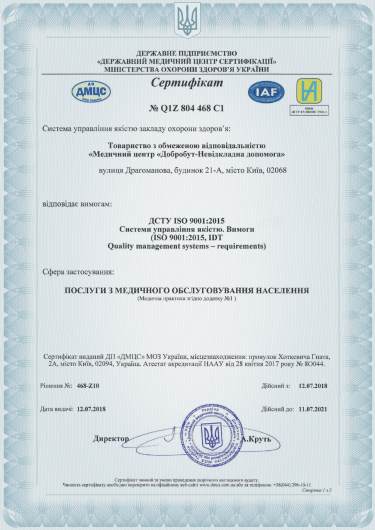
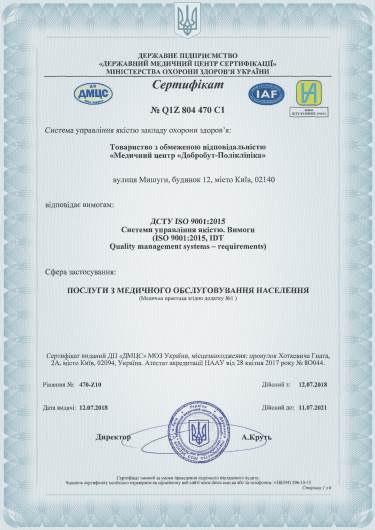
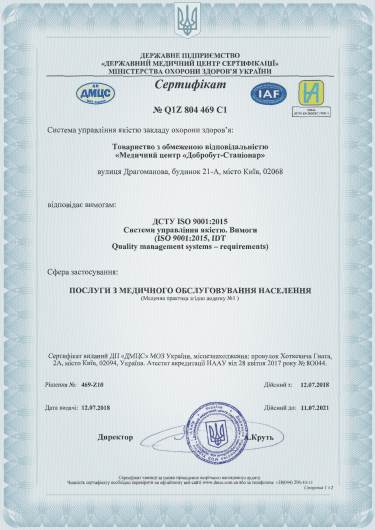
Accreditation certificates
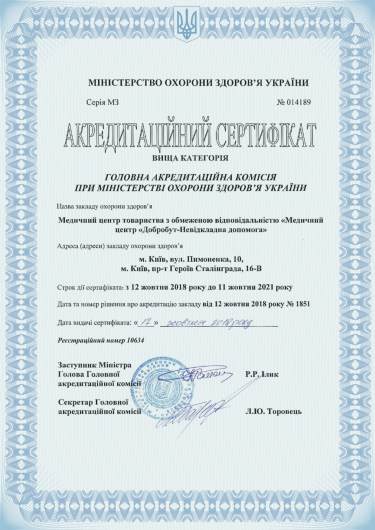
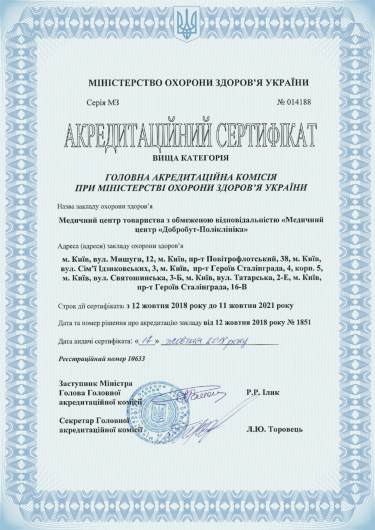

Medical practice licenses
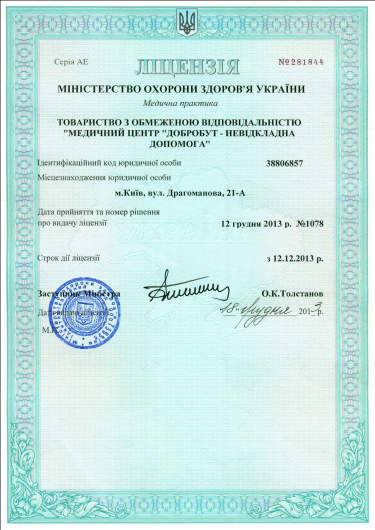
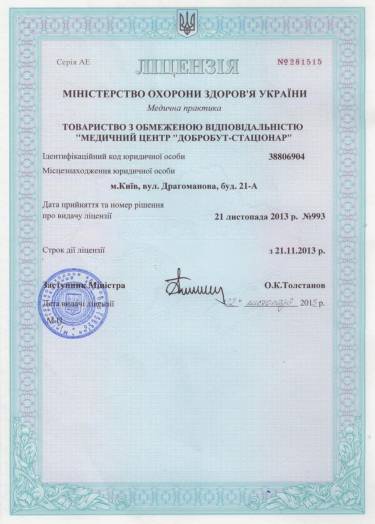

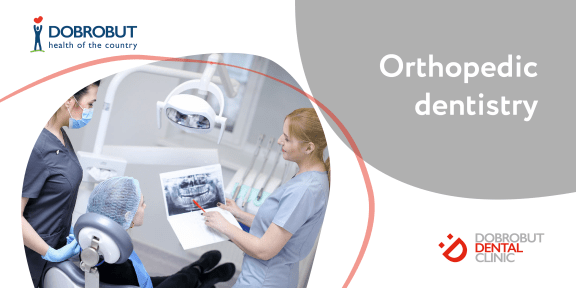
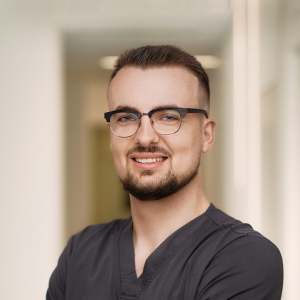
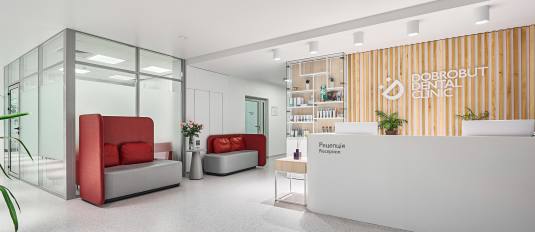

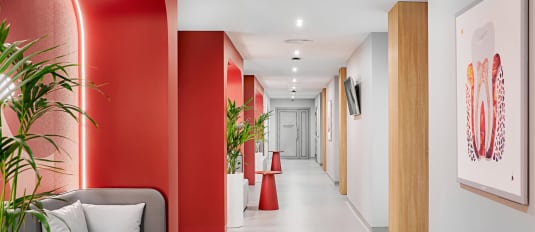

@2x.png)
@2x.png)
%402x.png)
%402x.png)
